Follow Chai and 808 on a musical journey in this rocking review of the brand new Hi-Fi Rush
If you too like listening to music while you walk, cook or carry out the most varied daily actions, then we bet that at least once in your life you will have let yourself be involved in the rhythm, putting yourself in time with your favorite song. Here, the latest effort by Tango Gameworks (yes, the creators of The Evil Within, of which you find our analysis of the second chapter here) could encompass this exact concept. Announced and released as a surprise during the Developer Direct on 25 January, Hi-Fi Rush immediately made headlines, and in this review we’ll find out together what’s so special about the new Xbox flagship exclusive.
Light up the stage!
The protagonist of our story is a boy named Chai. Characterized by a Rock’N’Roll soul, our hero decides to enroll in Vandelay Technologies’ “Project Armstrong”, through which he hopes to replace his broken arm with a bionic prosthesis and finally realize his dream of becoming a rock star. Obviously something goes wrong during the process and, in addition to the aforementioned prosthesis, Chai will find himself with his own music player implanted directly into his chest. This will have the unique effect of making the youngster perceive the whole world to the rhythm of the music, thus providing an ingenious narrative device to motivate the main gameplay mechanic of the game.
Soon Chai will also discover that Vandelay is not exactly the benefactor company he wants to be believed, but by exploiting his new bionic implant in his favor, the boy will soon learn to defend himself from the corporation’s robots, which, due to his unexpected implant in the chest, will try to eliminate it, classifying it as a “defect”. These are the premises of an overall well-written, hilarious and over the top plot, but which also does not give up an unexpectedly profound and appreciable moral. The various supporting actors who will gradually join Chai (as well as Chai himself) are all well characterized and able to make themselves loved. I certainly also deserve the continuous exchanges of jokes permeated with sagacious humor, capable of snatching much more than a laugh.
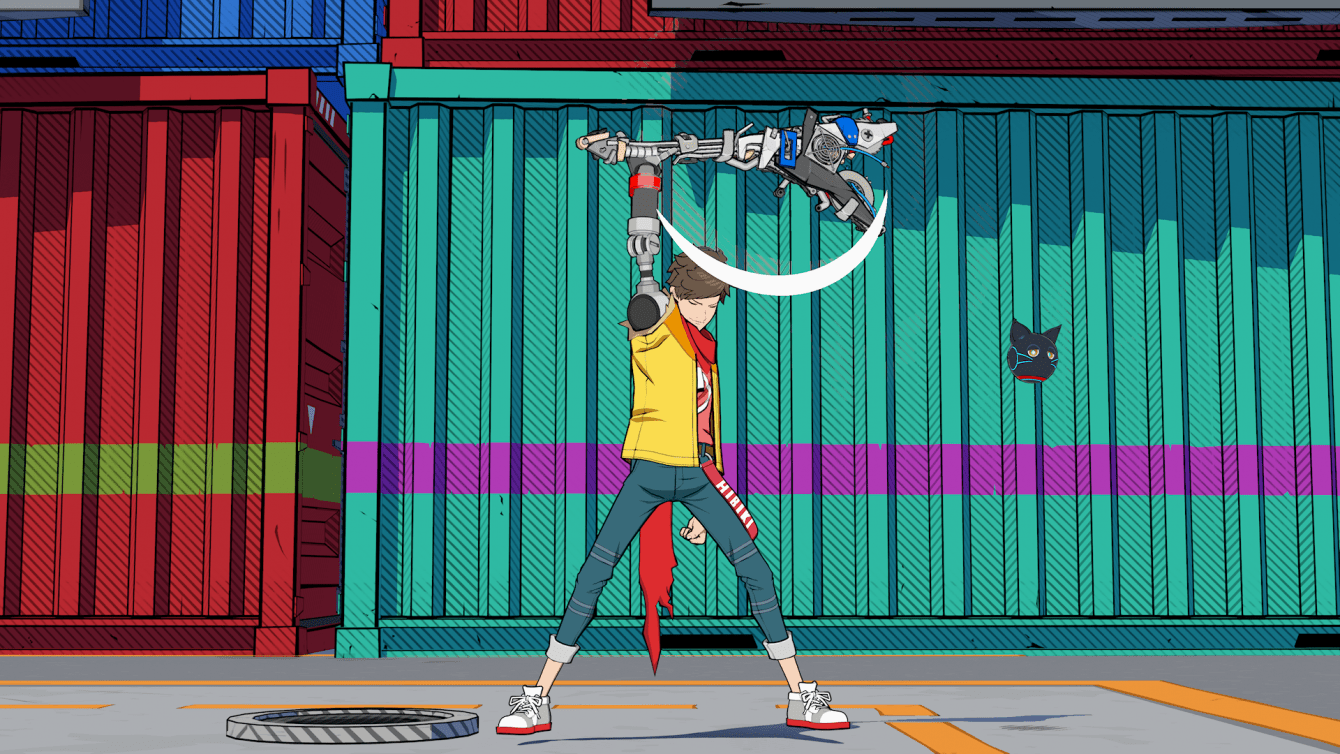
Welcome to the Vandelay – Hi-Fi Rush review: the birth of a Rockstar
Having made the necessary narrative premises, we can begin this review by explaining to you what Hi-Fi Rush actually is. Basically we are dealing with a hybrid between the Bayonetta or DMC-style action, and the rhythm game. In recent times we have witnessed the birth of titles such as Crypt Of The Necrodancer (and its Zeldian counterpart, Cadence Of Hyrule), BPM and Metal Hellsinger, which had already experienced the union of mechanics related to musical rhythm with other genres such as roguelike and the FPS. However, Tango Gameworks has managed to take everything to a new level, maniacally taking care of everything down to the smallest detail.
When we say that in the game everything goes in time with the music, we really mean EVERYTHING. It will be enough for you to see the cutscene that precedes the first real fight to understand how far the genius and madness of the software house have gone. From running, jumping, swinging and blasting bullets from supporting characters and enemies, to even inanimate objects like bridges and arenas that assemble themselves, literally every animation and sound effect is synchronized in time with the beat of the background song. Everything then happens with a naturalness that will hardly leave you indifferent.
Even during gameplay, the situation does not change: although a classic time indicator can always be activated, the title does everything to immerse you completely in the rhythm. Elevators, vegetation, even the life bar and the running animation of the protagonist will be in time, and it won’t take long to fully tune in to the beat of the various music tracks that will form the backdrop to the action.
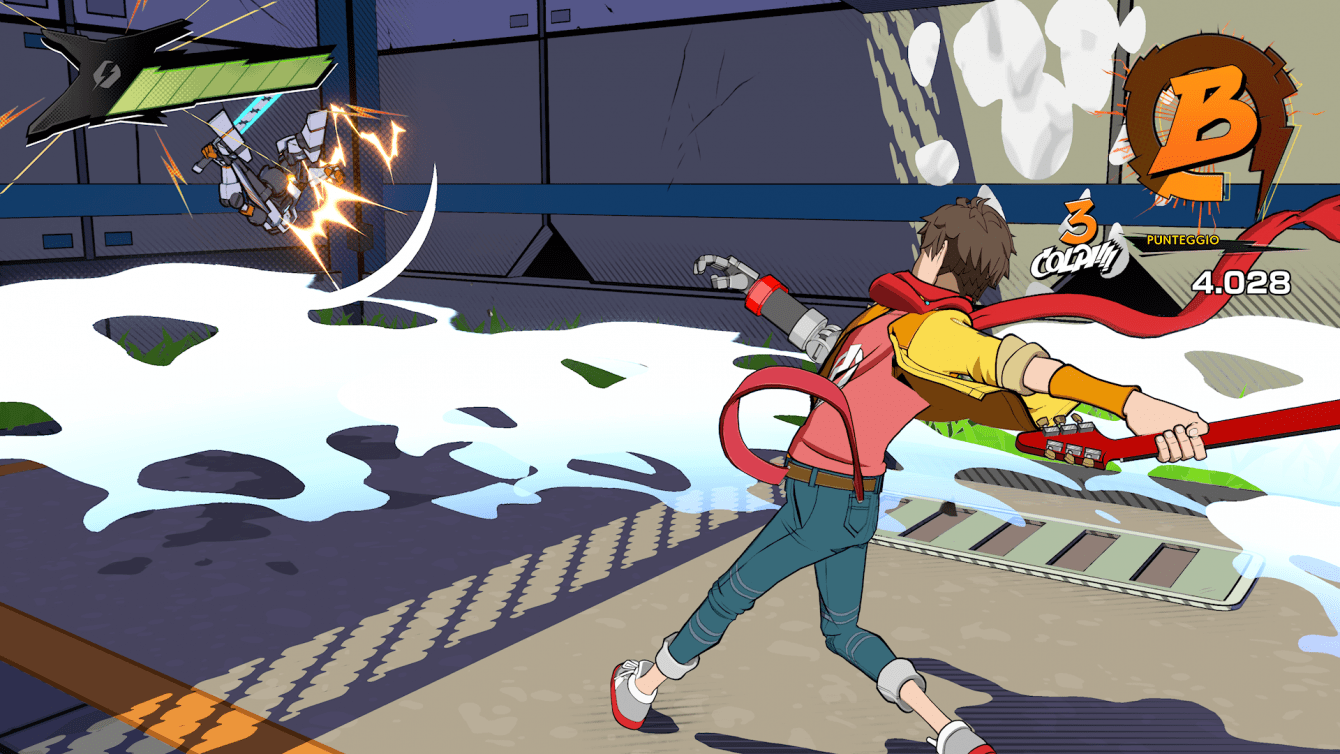
I was made for beating you – Recent Hi-Fi Rush: The Birth of Your Rockstar
The action soul of Hi-Fi Rush, also mentioned in the previous paragraph of this review, will be clear right away. Exactly as happens in many classics of the genre, we will have at our disposal a light attack (pressing X every beat) and a heavy one (pressing Y every two beats). These can of course be combined to perform a variety of different combos. Shortly after the incipit, we will gain access to the Refuge, where we will be able to carry out various activities, including: train in a virtual gym, buy (and, if necessary, even resell) new combos, useful items and special attacks, the latter executable using segments of the Reverb Bar (which must be filled by collecting batteries released by enemies and objects, and will be discharged at the end of each fight). The picture is completed by a dodge, which can become triple if performed in time, an upgradeable parry and a grappling hook to reach distant enemies.
It must be said that from a rhythmic point of view the title is rather permissive. In fact, we will be clearly told that our attacks will still go in rhythm regardless of the timing with which we press the keys, and not even the combos will stop if performed out of time. However, timed attacks will inflict more damage, and getting in tune with the rhythm will also allow us to dodge or parry enemy attacks more easily. Especially at higher difficulties, getting the beat right will be imperative as the title offers a well-calibrated level of challenge, but not to be underestimated. However, we can guarantee you that hitting the right sequence of combos, dodges and timed parries makes the game a galvanizing experience, capable of making you feel truly unstoppable like few others.

Don’t stop me now – Hi-Fi Rush review: the birth of a Rockstar
We have already mentioned something of the supporting actors who will support Chai in the first paragraph of this review. Without going into too much detail so as not to spoil the pleasure of discovering the story for yourself, we cannot fail to mention the skilled hacker Peppermint, and the robotic cat 808 who will accompany us throughout the adventure. Leaving aside the genius of the name (usually, in music, with 808 we refer to a characteristic and aggressive low-frequency electronic sound that recalls that of a bass, coming from the Roland-TR808, a drum machine marketed in the 80s, whose sounds have indelibly marked the development of genres such as hip-hop and electronic music), the likeable robotic feline will allow Chai to obtain very useful support from the supporting actors themselves.
This support will not be limited to simple advice, but 808 will act as a catalyst to allow us, via the press of a button, to physically summon our colleagues in the field. Each of them will be equipped with a special ability useful both in battle and in the various environmental puzzles we will encounter. The enemies we will have to face, in fact, will be varied and equipped with a good aesthetic characterization, as well as well-differentiated attack patterns. A detail that made us turn up our noses a little, however, concerns the fact that almost all of the slightly stronger enemies, after being weakened, will require you to complete a rhythmic sequence to be eliminated. If at first this is an absolutely impactful expedient, towards the end of the adventure, thanks to the large presence of stronger opponents, this mechanic will perhaps become a little too abused, losing the originality effect.
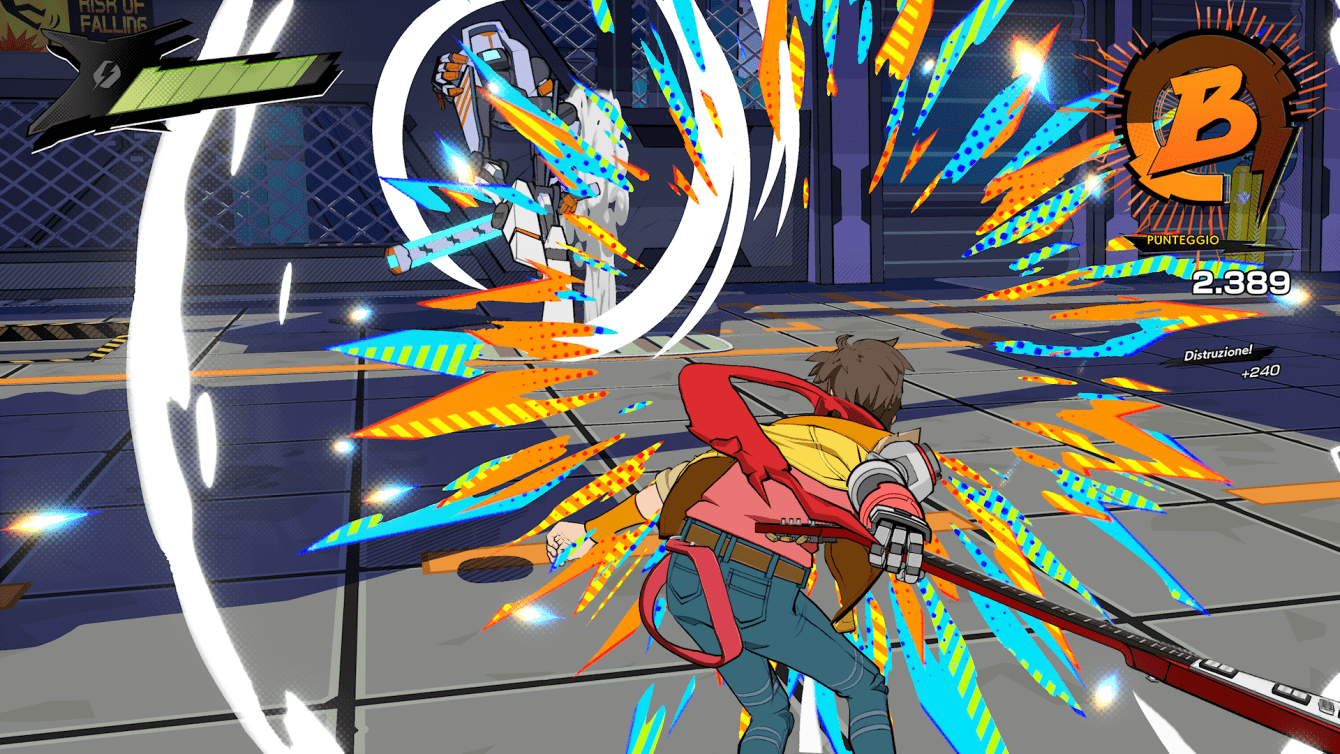
Angry Machines – Hi-Fi Rush review: the birth of a Rockstar
We’ve already talked about the good characterization of the protagonists, but what about the antagonists? The leaders of Vandelay Technologies are also outlined quite well, although some of them do not deviate too much from the classic speck of the mad villan obsessed with his role. Overall, however, their writing is good enough to be able to move the right amount of dislike in the player necessary to justify the use of strong manners against them. When the time comes to face them we will find ourselves involved in over the top boss fights, permeated by that dose of humor, chaos and madness that reminded us very closely of the best moments of the Platinum Games titles. Perhaps not all battles can be said to be truly memorable, but it is undeniable that some of them are characterized by flashes of genius and creativity that you will remember for a long time.
We have already mentioned in this review that in Hi-Fi Rush we will be dealing with some environmental puzzles. In fact, there will also be many moments in which exploration will take the place of pure action. In fact, the levels will be full of more or less hidden secondary roads, in which we will be able to find useful objects that can enhance us and mechanical components to spend in the shop. Scattered around the game world we will then find collectibles in the form of murals or classic text files to read to discover the most hidden backgrounds of the plot. We will also have to overcome some platform sections, some of them timed, others even in 2D with the camera that will offer us a horizontal view similar to the various Super Marios. These are pleasant passages, which could have been even more enjoyable if it weren’t for the character’s jump, a little imprecise to control. Nothing dramatic, also because the checkpoints are immediate and not at all punitive, but it is often difficult to accurately manage the distances covered by the jump.
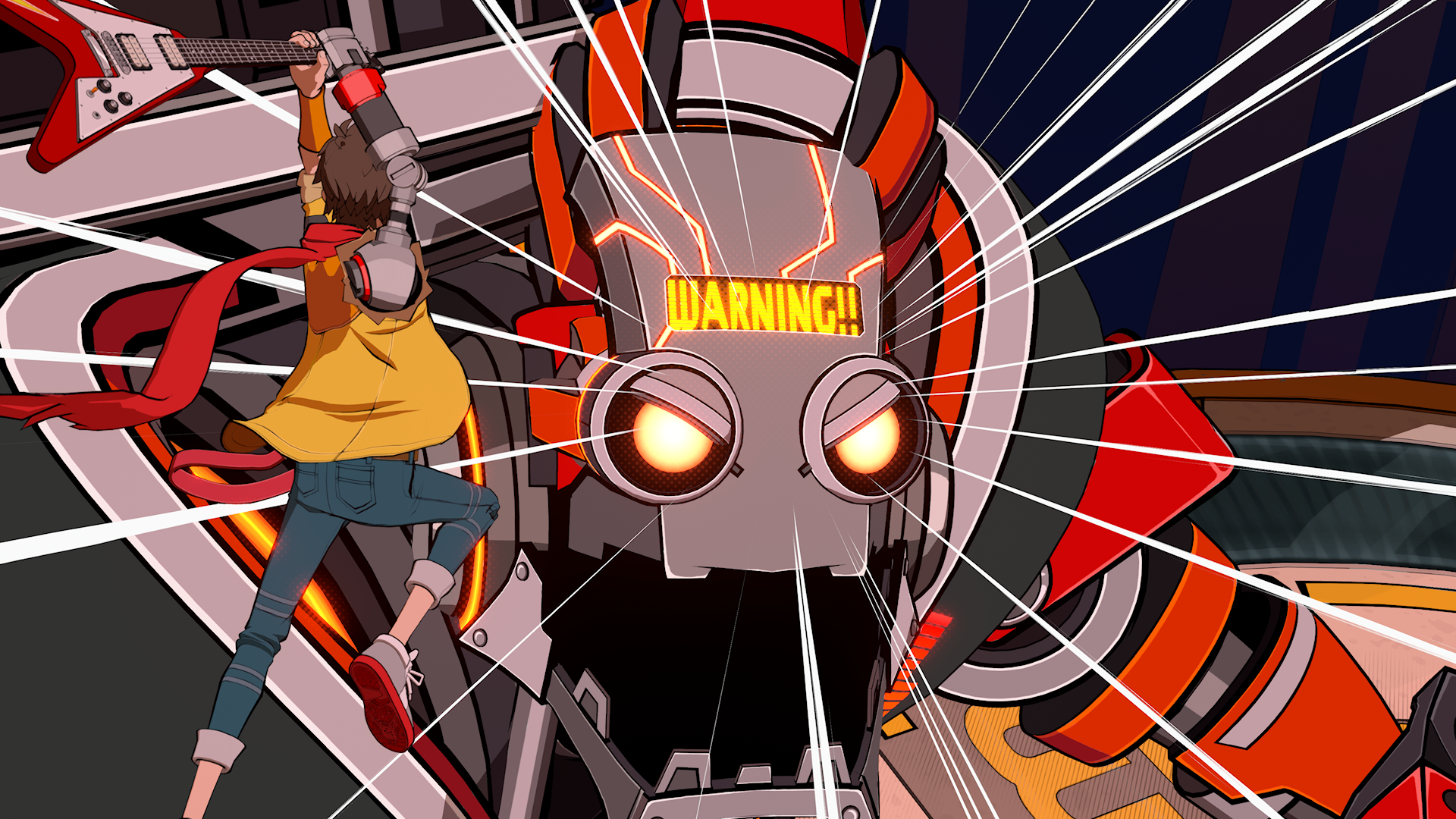
Perfect strangers – Hi-Fi Rush review: the birth of a Rockstar
We could not conclude this review dedicated to Hi-Fi Rush without mentioning the graphics and audio sectors. There isn’t objectively much to say about the graphic aspect of Tango Gameworks’ work: the cartoon graphics (with obvious references to the style of comics and pop art) and the animations are treated with rare skill. Watching a hilarious cutscene that seems to all intents and purposes straight out of a cartoon and, immediately afterwards, taking control of the character, realizing that it was made with in-game graphics is literally a joy for the eyes, capable of easily rivaling the best exponents such.
On the audio side, however, we have several original tracks written specifically for the game, which are flanked by a handful of songs by famous artists such as Nine Inch Nails and The Prodigy (here perfectly adapted to the game, with verses and choruses that follow one another to better accompany moments exploration, combat or the different phases of a boss battle). The compositional quality of the unreleased tracks makes them perhaps not quite as iconic as the latter, but equally able to perfectly accompany the action on the screen and the various interlude scenes.
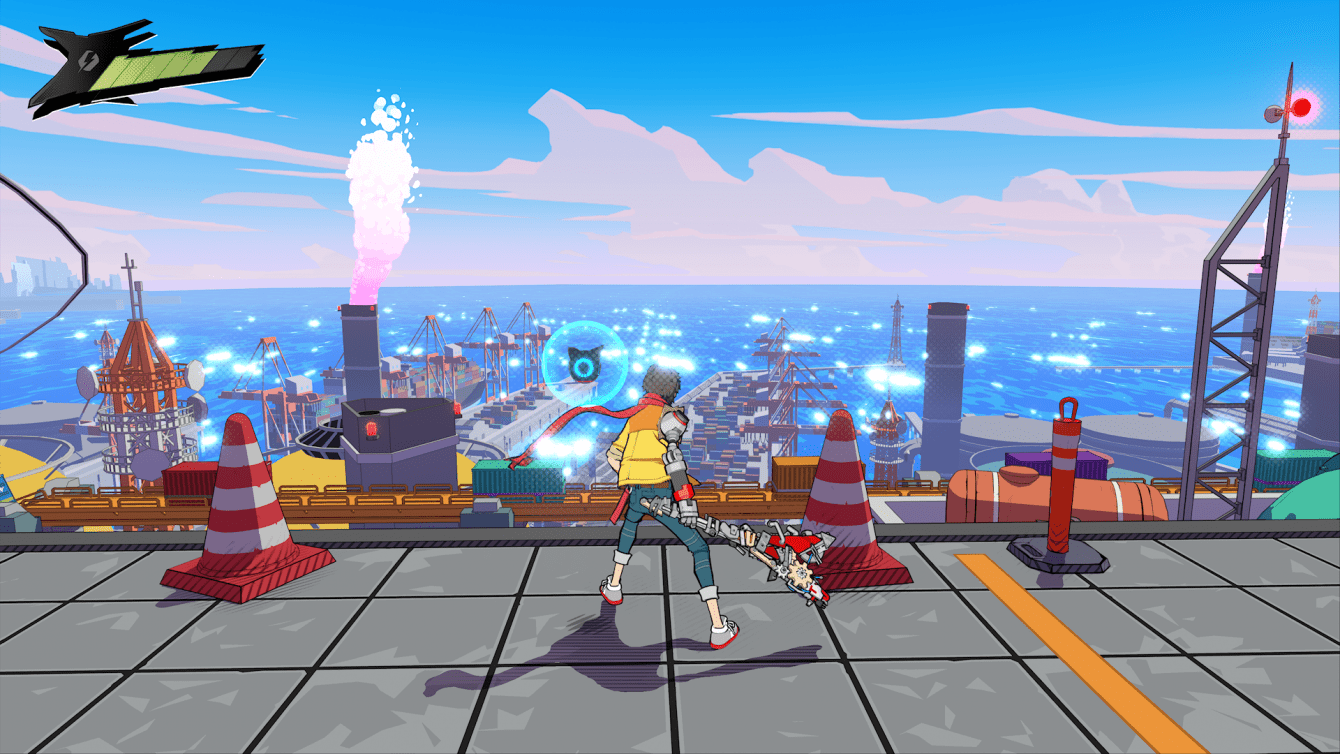
It’s a long way to the top (if you wanna Rock’N’Roll)
The adventure of Chai and 808 is a bolt from the blue that has ripped apart the gaming industry. A…
















Leave a Reply
View Comments